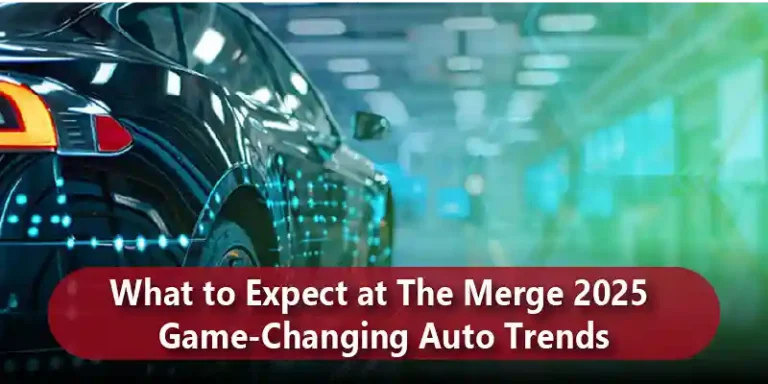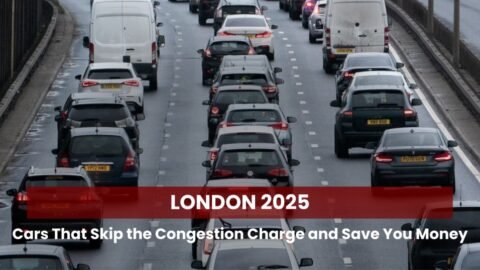The Automotive industry trends 2025 are not just about incremental improvements; they are about a fundamental “Merge”, a true convergence of software, electric power, and autonomy that is radically redefining the very concept of driving. “The Merge 2025” is our conceptual crossroads for the year, where these powerful forces stop being separate trends and start forming a singular, new future of mobility.
If you’re a consumer looking to buy a next-generation vehicle, an investor tracking the future of mobility 2025, or an industry professional aiming to stay ahead of the curve, this is your definitive guide to the game-changing auto trends that will dominate the landscape. Prepare for a world where your car is not just a mode of transport, but your most intelligent, connected, and sustainable digital device.
1. The EV Revolution Accelerates: Beyond Early Adoption
The era of early Electric vehicles 2025 adoption is officially over. The shift to electric power is no longer a niche movement, it’s a global mandate and a core component of sustainable automotive technology.
The New Battery Battlefield and EV Adoption Trends
By 2025, the narrative moves from range anxiety to charging certainty. Major advancements in battery technology are a cornerstone of the auto trends 2025:
- Solid-State Promise: While mass-market solid-state batteries might still be a few years out, the crucial testing and integration phases are now in full swing. We expect to see demonstrator vehicles and pilot programs at The Merge 2025 showcasing batteries that offer greater energy density, faster charging times, and enhanced safety. This accelerates EV adoption trends by directly addressing consumer pain points.
- The Power Grid Connection (V2X): Bidirectional charging moves from concept to common feature. Your EV will not just consume power; it will be an active, valuable component of the electrical grid, earning you credits by intelligently discharging power during peak demand. This flips the ownership model and makes the total cost of ownership for an EV even more compelling.
- Infrastructure Surge: Driven by both public and private investment, charging infrastructure is professionalizing. Expect to see highly reliable, ultra-fast DC charging hubs become the norm, strategically placed to enable seamless long-distance travel.
The relentless pursuit of cost reduction, largely driven by global competition, is making EVs cheaper to produce, which translates directly to more affordable new cars for consumers. This EV adoption trend is reshaping global sales charts.
2. Autonomy Hits the Road: Self-Driving Car Trends 2025
The dream of fully Autonomous vehicles 2025 is still being built, but the progress in 2025 is substantial and immediately impactful. The shift is focusing on making current systems more reliable, expansive, and user-friendly.
Advanced Driver Assistance Systems as the Stepping Stone
The major development is the sophistication of Level 2 and Level 3 systems features that allow for hands-off/eyes-on or, in certain controlled environments, eyes-off driving.
- Sensor Fusion & AI: The heart of this advancement is car technology advancements 2025 in sensor fusion. Vehicles are now integrating data from high-resolution cameras, LiDAR and 4D imaging radar in real-time with increasing accuracy. Machine learning and AI are enabling these systems to predict the actions of other drivers and pedestrians with remarkable precision, a key development for self-driving car trends 2025.
- Over-the-Air Updates for Autonomy: The ability to improve a vehicle’s self-driving capabilities through an overnight software update is a reality. As automakers embrace automotive digital transformation, your car’s intelligence quotient will improve over time, making it safer and more capable years after you drive it off the lot.
- The Urban Focus: While highway autonomy is maturing, watch for more fleet-based, low-speed, geo-fenced autonomous deployments in urban centers for deliveries and ride-sharing. These applications are the proving grounds for widespread autonomous vehicles 2025 deployment.
3. The Software-Defined Vehicle: Connected Car Technology
If the engine was the heart of the old car, software is the soul of the new one. The connected car technology ecosystem is maturing, turning the vehicle into a true mobile digital platform.
Personalization, Features-on-Demand, and AI
The biggest shift is toward hyper-personalization, enabled by smart car features 2025 driven by AI.
- AI-Powered Cockpits: Forget basic voice commands. Conversational AI assistants, integrated with the vehicle’s operating systems, will handle complex, multi-step tasks. They will learn your habits as your preferred music on the commute home, your ideal climate settings, and even predict needed maintenance. This is the ultimate expression of car technology advancements 2025.
- Subscription Features: The business model is changing. Many hardware capabilities are installed at the factory, but features are unlocked via a subscription or a one-time activation, managed over the air. Whether it’s high-performance drive modes, extended ADAS features, or specific luxury amenities, consumers can customize their experience post-purchase. This is a crucial element of the automotive digital transformation.
- Vehicle-as-a-Service: This model is growing, particularly for fleets and urban dwellers. It bundles the vehicle, maintenance, insurance, and even feature upgrades into a single monthly fee. This is a game-changer for the future of mobility 2025, focusing on access over ownership.
4. Sustainability and Circularity: More Than Just the Powertrain
Sustainability in 2025 goes far beyond the tailpipe. The focus is shifting to the entire life cycle of the vehicle, from manufacturing to end-of-life recycling.
- Eco-Conscious Materials: The adoption of lighter, bio-based, and recycled materials for interiors and exteriors is accelerating. Vegan interiors, recycled plastics, and low-CO2 steel are becoming key differentiators, not just for niche luxury brands but across the board. This commitment to sustainable automotive technology is a non-negotiable for Millennial buyers.
- Battery Recycling and Second Life: The industry is heavily investing in robust battery recycling infrastructure to manage the millions of EVs coming off the road in the next decade. Furthermore, end-of-life EV batteries are being repurposed for stationary energy storage in homes and businesses, creating a profitable second life and securing the supply chain for critical materials.
- Sustainable Manufacturing: Industry 5.0 principles with human-machine collaboration, personalization, and sustainability which are being integrated into the factory floor. This simulate and perfect production processes before a single physical component is made.
5. The Shifting Retail Landscape: Automotive Digital Transformation
The process of buying and owning a car is changing as much as the car itself. Automotive digital transformation is restructuring the relationship between the consumer, the dealer, and the manufacturer.
- Direct-to-Consumer Models: More traditional manufacturers are adopting hybrid direct sales models, streamlining the purchase process to be more like buying any other major digital product. This provides a more consistent, transparent, and user-friendly experience.
- Immersive Digital Showrooms: Augmented Reality and Virtual Reality are being used to create hyper-personalized shopping experiences. Consumers can virtually configure their next-generation vehicle with every option, “test drive” it in simulated real-world conditions, and even take delivery all without setting foot in a physical dealership.
Things You Might Wonder
The most significant change is the convergence of technologies the “Merge” where EVs, autonomous vehicles 2025, and software create truly next-generation vehicles. This is driving the entire future of mobility 2025.
Safety is improving through advanced sensor fusion and AI in ADAS, which are key car technology advancements 2025. These systems, foundational to autonomous vehicles 2025, are becoming better at predictive accident avoidance and are the leading edge of self-driving car trends 2025.
The primary drivers for EV adoption trends are decreasing battery costs, expanded and faster charging infrastructure, and the growing consumer demand for Electric vehicles 2025 as a form of sustainable automotive technology.
Auto trends 2025 show that sustainability is about the entire lifecycle. This includes the use of bio-based materials, advanced battery recycling programs, and energy-efficient manufacturing processes, all key aspects of sustainable automotive technology.
The Merge is Complete: Future of Mobility
Auto trends 2025 mark the year where the automotive industry fully transitions from an industrial sector focused on hardware to a technology sector defined by software. The future of mobility 2025 is one defined by access, intelligence, and environmental consciousness. For consumers, this translates to more choice, lower operational costs, and a driving experience that is customized moment by moment. For the industry, it necessitates bold thinking, constant adaptation, and a readiness to embrace a future where the vehicle is a constantly evolving digital companion
The Merge 2025 is here, and the changes are happening now. For any hacks, or car tips, join the conversation at Ask about cars!
For More Related Blogs:
The Biggest Auto Industry Mergers & Partnerships of 2025
Top 10 Automotive Trends Shaping 2025—What Drivers Need to Know
Global Car Sales 2025: The Brands Winning And Losing Worldwide
Top 7 Global Car Trends That Will Change Driving in 2025







